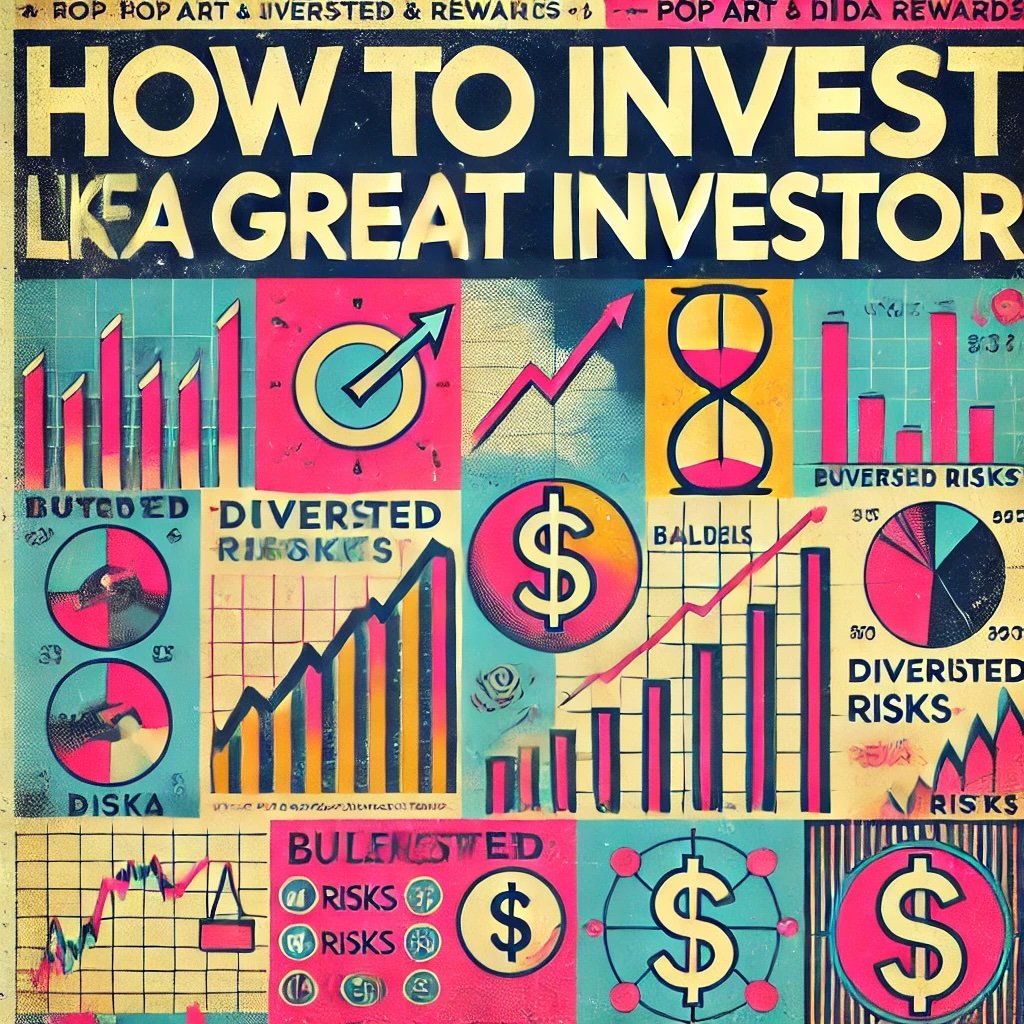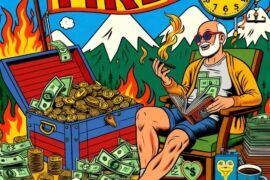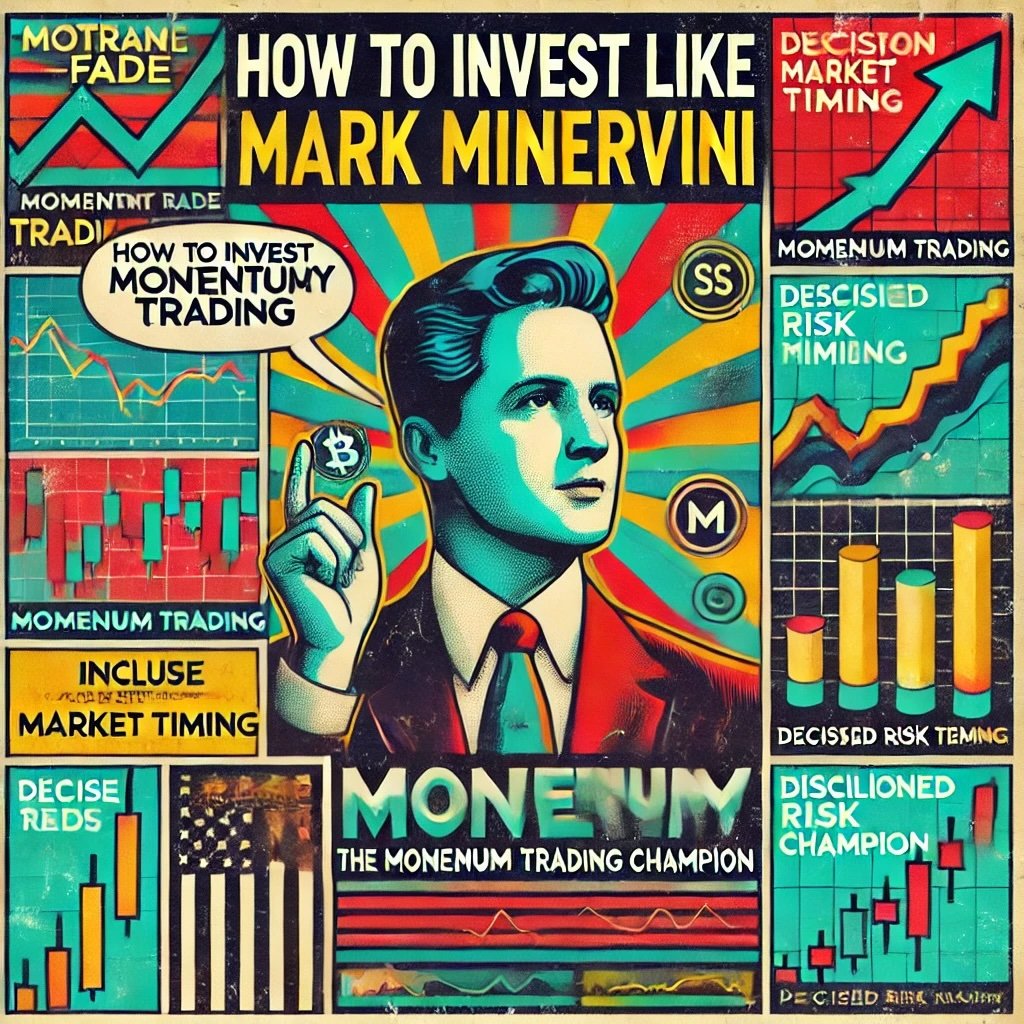As investors we like to think we have the “perfect portfolio” that suits our needs in terms of a returns meets risk standpoint but what if we’re unaware of our own investing blind spot?
What is your blind spot as an investor?
Say, what?
Investor blind spot?
Have you taken the time to even consider that?
My guess would be probably not.
Do you love your portfolio strategy or affiliation to a specific type of investor group, such as the Bogleheads, to the point where you’re not considering what could potentially go awry with your portfolio?
What is the perfect storm that could blow your house down?
An investor blind spot may or may not be apparent to you and/or others.
Sometimes it takes event driven circumstances, such as high inflation and investor exuberance that sends both historically uncorrelated stocks and bonds down together, to reveal what your portfolio is and isn’t prepared for.
Personally, I’ve had plenty of investor blind spots, throughout my investing journey.
For a while I was an equity only investor. I was obsessed with equity optimization above all else.
My investor blindspot, at the time, was not paying attention to other asset classes, strategies or viewing diversification from a lense that extended beyond merely stocks.
I was prepared, willing and expecting to take a blindside hit, at any given moment in time, where my portfolio would go down -20%, -30%, -40% or -50%.
Basically, from my point of view back then, equities were by far the best game in town. And given I’m in the accumulation phase of my investing journey, I was going to take all of the associated lumps (drawdowns and bear markets) in order to get higher returns (supposed equity advantage vs other asset classes).
It took education, a willingness to learn and the desire to pursue the picture perfect portfolio in order for me to realize there was likely a better way.
Given that I had an “investor blind spot” then and likely very well continue to have an “investing blind spot” now, let’s explore certain portfolios, strategies and styles of investing to see if we can uncover apparent weaknesses and figure out ways to improve upon them.

What Is Your Blind Spot As An Investor?
Hey guys! Here is the part where I mention I’m a travel vlogger! This investing opinion blog post is entirely for entertainment purposes only. There could be considerable errors in the data I gathered. This is not financial advice. Do your own due diligence and research. Consult with a financial advisor.
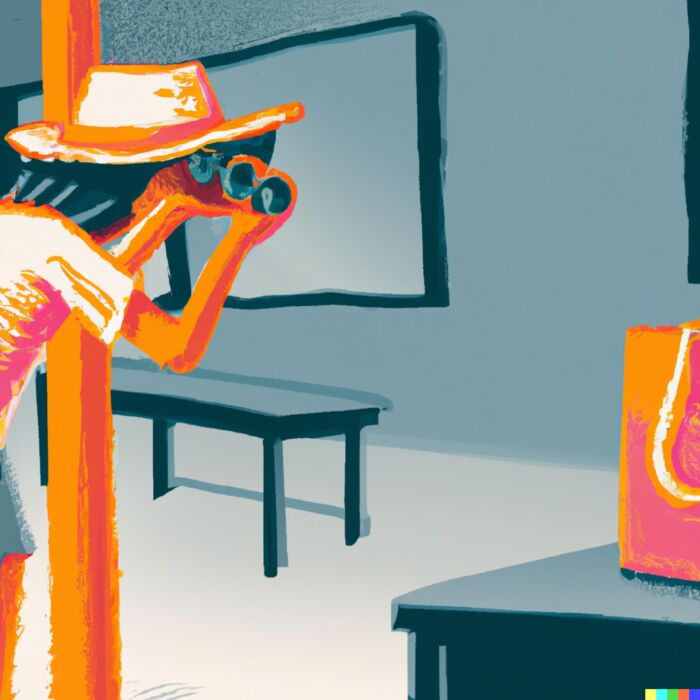
These asset allocation ideas and model portfolios presented herein are purely for entertainment purposes only. This is NOT investment advice. These models are hypothetical and are intended to provide general information about potential ways to organize a portfolio based on theoretical scenarios and assumptions. They do not take into account the investment objectives, financial situation/goals, risk tolerance and/or specific needs of any particular individual.
How Is Your Portfolio Unprepared?

Investor Blind Spot

Classic 60/40 Portfolio

The classic 60/40 portfolio is what most investors own.
It is the standard portfolio where the gas of 60% equities is met with the brakes of 40% bonds to create a portfolio where returns and risk are apparently balanced.
Enter 2022.
Both stocks and bonds down.
Clearly the biggest blind spot of the 60/40 is not being prepared for stagflation.
When stocks and bonds become correlated this portfolio sinks awfully fast.
Not having an alternative sleeve or asset class that is uncorrelated to both stocks and bonds is its biggest weakness/ blind spot hands down.
Yet this is what most advisors trot out as the “model portfolio” for investors.
Given its Achilles heel is on full display, in recent months, hopefully a paradigm shift will occur at some point in which informed investors will come to the conclusion this isn’t the optimal portfolio.

The Bogleheads Investor
Members of The Bogleheads are hardcore indexers and fee reduction ramparts.
Own them all. Make it as cheap as possible.
This strategy sounds good in theory but in practice not pursuing certain strategies because they cost a little more is clearly a blind spot for Bogleheads.
Factor investing and alternatives such as trend-following wouldn’t be on the shortlist of a Bogleheads shopping list given they deviate from stock/bond only combinations and most definitely cost more than market-cap weighted indexing.
Instead Bogleheads settle for inferior diversification strategies given all risk is concentrated on stock market-beta and aggregate bond indexes.
They potentially leave 150-300 basis points on the table for multi-factor equity funds instead to keep costs lower in the 10 to 30 basis point range.
This is akin to fighting over scraps that have fallen off of the table rather than enjoy dinner that is being served above.
I wrote a post entitled: “Why I’m Not A Bogleheads Investor And Never Will Be“
I go over more potential Boglehead blind spots but for the purposes of identifying the main one, in my opinion, it is a slavish obsession with costs and simplicity over strategy and sophistication.

Equity Only Strategy
Stocks for the long run!
The healing power of equities!
Equities are the best game in town!
Yep. I used to be one of those guys.
Equity only investors are seeking the highest returns possible while accepting the high standard deviation of the asset class.
Brutal bear markets.
Portfolios down -40%.
This is just par for the course for equity only investors.
Chin up buttercup.
This is what seeking higher returns looks like.
But wait.
What if there was another way?
What if you could expand the canvas of your portfolio and hold bonds and alternatives in a multi-strategy, multi-asset class portfolio?
In that case you could potentially have the returns of equities (or even better) and manage volatility much more efficiently.
Worst years of -15% instead of -45%.
The fund UPAR (Ultra Risk Parity) with a 168% canvas has simulated returns of 13% this century.
That is higher than any major stock index.
Clearly equity investor’s biggest blind spot is not thinking more about diversifying between uncorrelated asset classes and strategies while utilizing moderate leverage to seek equity-like returns.

Value Investor

Value investors are a special breed.
They’re some of my favourite people in the twitter-sphere more commonly known as #fintwit.
They seek bargains.
They’ve historically outperformed market-cap weighted portfolios with ease in both the 20th and 21st century.
However, what about other factors that drive returns?
Momentum.
Quality.
Size.
Hardcore value investors aren’t interested in those.
And that’s a shame because they’re missing out on combining a factor such as momentum (which is uncorrelated to value stocks) in their portfolios to smooth out returns and provide rebalancing alpha opportunities.
Clearly, value only investors have a blind spot of ignoring other equity factors.
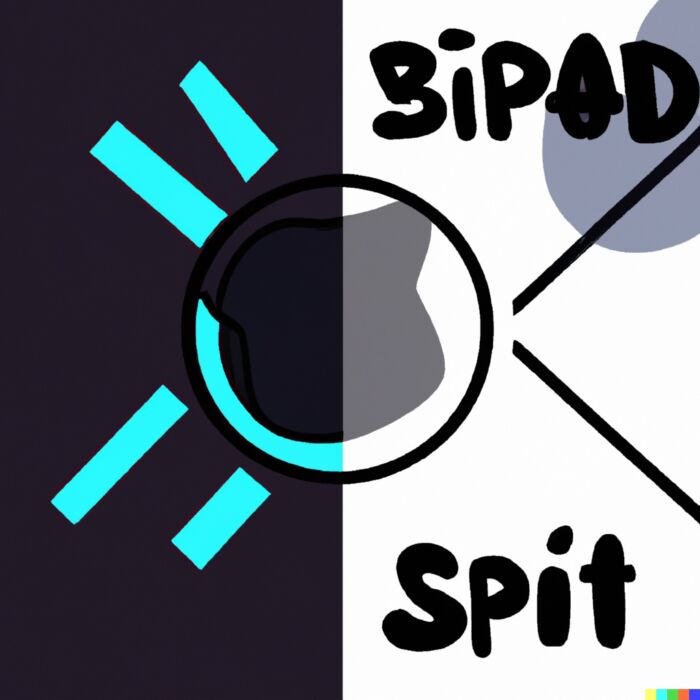
Ray Dalio All-Weather Portfolio
How could the Ray Dalio All Weather Portfolio, possibly the most diversified portfolio of all, have any potential blind spots?
Afterall, it has the 1-2-3 steps of asset class allocation and diversification between equities, bonds and alternatives that smooth out returns.
It’s all-weather. It must be perfect, right?
Well, if we’re talking about the classic Ray Dalio All-Weather Portfolio there could be some potential weaknesses.
Market-cap weighted equities instead of mid-cap value?
Wouldn’t it make more sense to have multi-factor exposure to drive better returns under the equity sleeve?
How about minimum volatility equities instead?
In that case you’d be potentially 1000 basis points more defensive in down market years.
How about long only Gold and Commodity strategies?
Those are highly volatile alternative asset classes.
Years of -25% to -45% are not uncommon.
What if there was a more stable alternative strategy such as trend-following they could pursue instead?
The blind spot of the Ray Dalio All-Weather Portfolio is not putting in its best effort to optimize each asset-class sleeve of the portfolio.

Professional Investor

What about the professional investor?
They’re pros so no weaknesses, right?
Actually, that couldn’t be further from the truth.
Professional investors, especially those that create/manage ETFs and Mutual Funds, are creating products that are for sale.
In order to attract clients they have to be known for something unique.
A strategy they’ve perfected.
And once they’ve created their soup they’re kind of stuck with it.
That’s what they’re known for and what clients have bought.
It is much harder to change course if they’ve expanded their knowledge and come up with better ideas.
That’s kind of flip-flopping, isn’t it?
Also, they’re battling for attention in the marketplace of ideas and likely going down the tunnel of confirmation bias in order to prove their points against other strategies.
Clearly, professional investors have a potential blind spot of strategy constraints and confirmation bias.

Amateur Investor
What about the amateur investor?
If they’re well versed they can put it altogether, right?
Possibly. But that likely isn’t happening very often.
The average amateur DIY investor lacks the patience and conviction to stick with most strategies.
They flip-flop like crazy and typically chase performance.
The biggest blind spot with amateur investors, since they’re accountable to only themselves, is recency bias, loss aversion and patience.

Nomadic Samuel Investor
What about me?
Well, I’ve got no blind spots whatsoever.
LOL. Yeah right.
Given that I’m a Sponge Investor and contrarian by nature I’m constantly seeking more sophisticated and uncorrelated strategies to put into my portfolio.
My biggest blind spot by far is potentially succumbing to diworsification.
But diversification is your only free lunch, no?
Yes. But.
Consider this.
Diworsification is as follows from Investopedia:
“The process of adding investments to a portfolio in such a way that the risk-return tradeoff is worsened.”
“Diworsification occurs from investing in too many assets with similar correlations that add unnecessary risk to a portfolio without the benefit of higher returns.”
Yeah. That’s me.
Possibly mucking things up by trying to be too sophisticated.

What Is Your Blind Spot As An Investor? — 12-Question FAQ (Self-Audit & Portfolio Readiness)
What is an “investor blind spot”?
It’s a pattern of assumptions, habits, or constraints that leaves your portfolio exposed to scenarios you haven’t truly considered—often revealed only when markets regime-shift (e.g., inflation shock, liquidity withdrawal, rising rates).
How do I quickly screen my portfolio for obvious blind spots?
Run a 5-minute triage: (1) list your top 5 holdings by risk (not capital), (2) map equity factor tilts, (3) check bond duration/credit mix, (4) note any alts (trend, commodities, gold), and (5) stress against three regimes: stagflation, deflation bust, rate spike.
Why is 60/40 vulnerable in certain regimes?
Because it implicitly relies on negative stock/bond correlation. In inflationary shocks or supply-side crises, that correlation can flip positive, causing both sides to fall together without an uncorrelated sleeve to cushion declines.
What’s the blind spot of “Boglehead-style” simplicity?
Cost-minimization can crowd out diversification by strategy (e.g., multi-factor equities, managed futures). Ultra-low fees help, but over-reliance on market beta and aggregate bonds may leave portfolios under-prepared for regime change.
What pitfalls come with equity-only portfolios?
They maximize long-run CAGR but accept deep, prolonged drawdowns, behavioral stress, and sequence-risk if withdrawals begin during a bear market. The blind spot is ignoring uncorrelated return streams that can smooth the ride.
Do “All-Weather/Risk-balanced” portfolios have blind spots?
Yes—often unoptimized sleeves (cap-weighted equity instead of multi-factor; long-only commodities/gold without a trend overlay). The structure is robust, but each sleeve still benefits from evidence-based optimization.
What behavioral biases most often blindside investors?
Recency bias, overconfidence, confirmation bias, loss aversion, and performance-chasing. These nudge investors to buy late, sell early, under-diversify, and abandon plans at the worst time.
How can I tell if I’m “diworsifying”?
If new positions share similar correlations and factor exposures, add complexity but don’t improve risk-adjusted return, or force you to abandon rebalancing rules—you’re probably adding noise, not resilience.
What role should alternatives play in closing blind spots?
A small sleeve of uncorrelated or negatively correlated strategies (e.g., managed futures/trend, commodities, gold, market-neutral) can mitigate stock/bond correlation spikes and broaden the sources of return.
How do pros end up with blind spots?
Product constraints and career risk. Mandates, benchmarks, and branding lock pros into narrow lanes; confirmation bias hardens views. The fix is explicit pre-mortems and willingness to iterate sleeves within mandate.
What practical steps harden a portfolio against surprises?
Codify an IPS, add a regime stress grid, diversify by asset, factor, and strategy, set rebalance bands, and pre-commit to drawdown playbooks (what you’ll add/trim at −10/−20/−30%). Automate where possible.
How often should I re-assess my blind spots?
At least annually and after any life change or macro regime shift (inflation trend breaks, policy pivots). Re-run correlations, factor attributions, and scenario tests; adjust sleeves, not your entire philosophy.
Nomadic Samuel Final Thoughts
What do you think is your biggest investor blind spot?
I’m of the opinion we’ve all got at least one (if not many).
I think one of the most prudent things you can do as an investor is become more self-aware.
Even asking the question what is my blind spot as an investor shows a degree of humility and self-reflection.
So many of us are just way too overconfident.
Are you impatient?
Are you prone to groupthink or affiliation?

Have you not been learning new information about investing strategies that aren’t part of your current strategy?
Interesting things to ponder, I’d say.
Maybe my biggest blind spot right now is not grabbing lunch as I’m feeling waning creativity over here.
I think we’ll wrap things up.
Blind spot and all.
Ciao for now.
Important Information
Comprehensive Investment Disclaimer:
All content provided on this website (including but not limited to portfolio ideas, fund analyses, investment strategies, commentary on market conditions, and discussions regarding leverage) is strictly for educational, informational, and illustrative purposes only. The information does not constitute financial, investment, tax, accounting, or legal advice. Opinions, strategies, and ideas presented herein represent personal perspectives, are based on independent research and publicly available information, and do not necessarily reflect the views or official positions of any third-party organizations, institutions, or affiliates.
Investing in financial markets inherently carries substantial risks, including but not limited to market volatility, economic uncertainties, geopolitical developments, and liquidity risks. You must be fully aware that there is always the potential for partial or total loss of your principal investment. Additionally, the use of leverage or leveraged financial products significantly increases risk exposure by amplifying both potential gains and potential losses, and thus is not appropriate or advisable for all investors. Using leverage may result in losing more than your initial invested capital, incurring margin calls, experiencing substantial interest costs, or suffering severe financial distress.
Past performance indicators, including historical data, backtesting results, and hypothetical scenarios, should never be viewed as guarantees or reliable predictions of future performance. Any examples provided are purely hypothetical and intended only for illustration purposes. Performance benchmarks, such as market indexes mentioned on this site, are theoretical and are not directly investable. While diligent efforts are made to provide accurate and current information, “Picture Perfect Portfolios” does not warrant, represent, or guarantee the accuracy, completeness, or timeliness of any information provided. Errors, inaccuracies, or outdated information may exist.
Users of this website are strongly encouraged to independently verify all information, conduct comprehensive research and due diligence, and engage with qualified financial, investment, tax, or legal professionals before making any investment or financial decisions. The responsibility for making informed investment decisions rests entirely with the individual. “Picture Perfect Portfolios” explicitly disclaims all liability for any direct, indirect, incidental, special, consequential, or other losses or damages incurred, financial or otherwise, arising out of reliance upon, or use of, any content or information presented on this website.
By accessing, reading, and utilizing the content on this website, you expressly acknowledge, understand, accept, and agree to abide by these terms and conditions. Please consult the full and detailed disclaimer available elsewhere on this website for further clarification and additional important disclosures. Read the complete disclaimer here.


